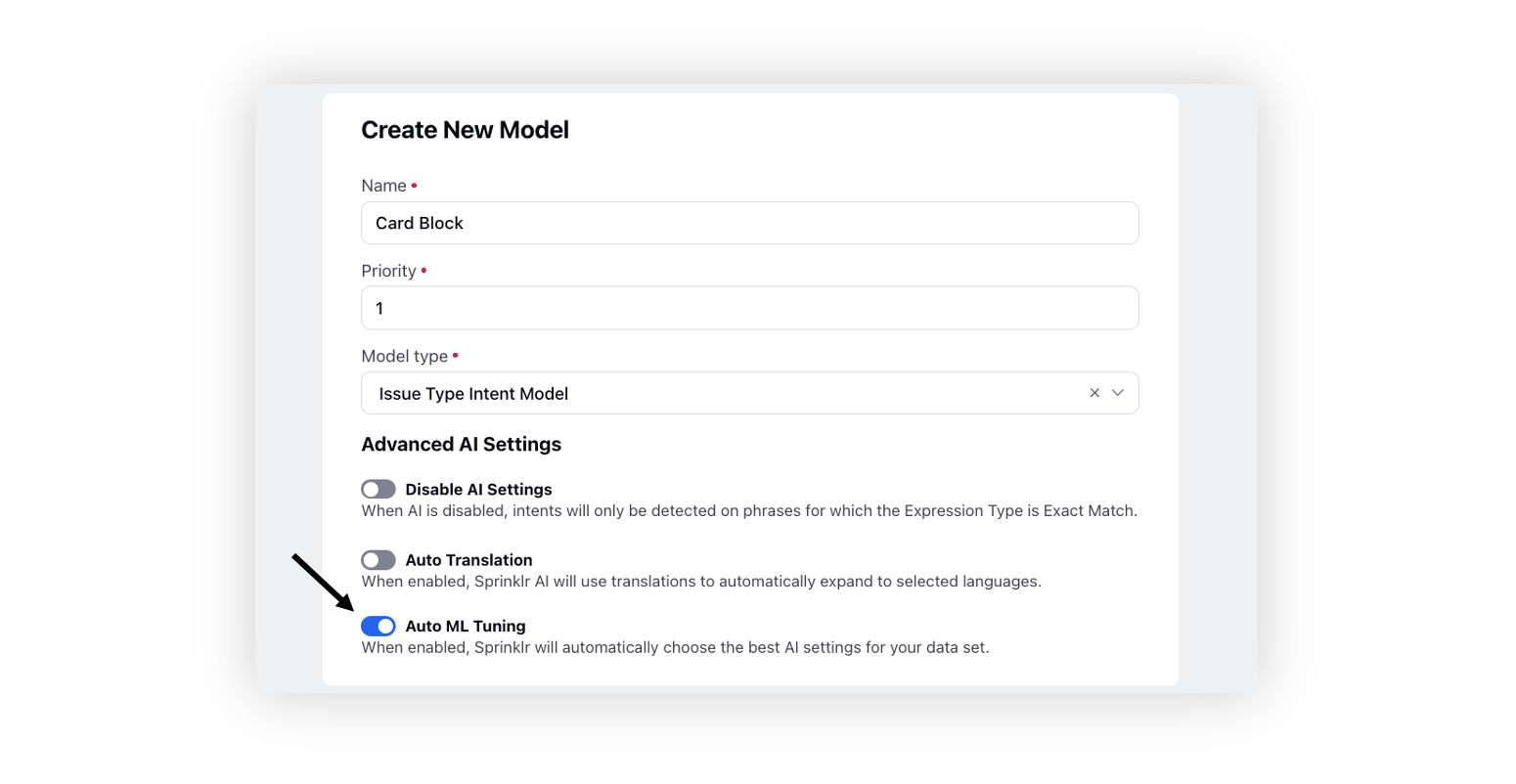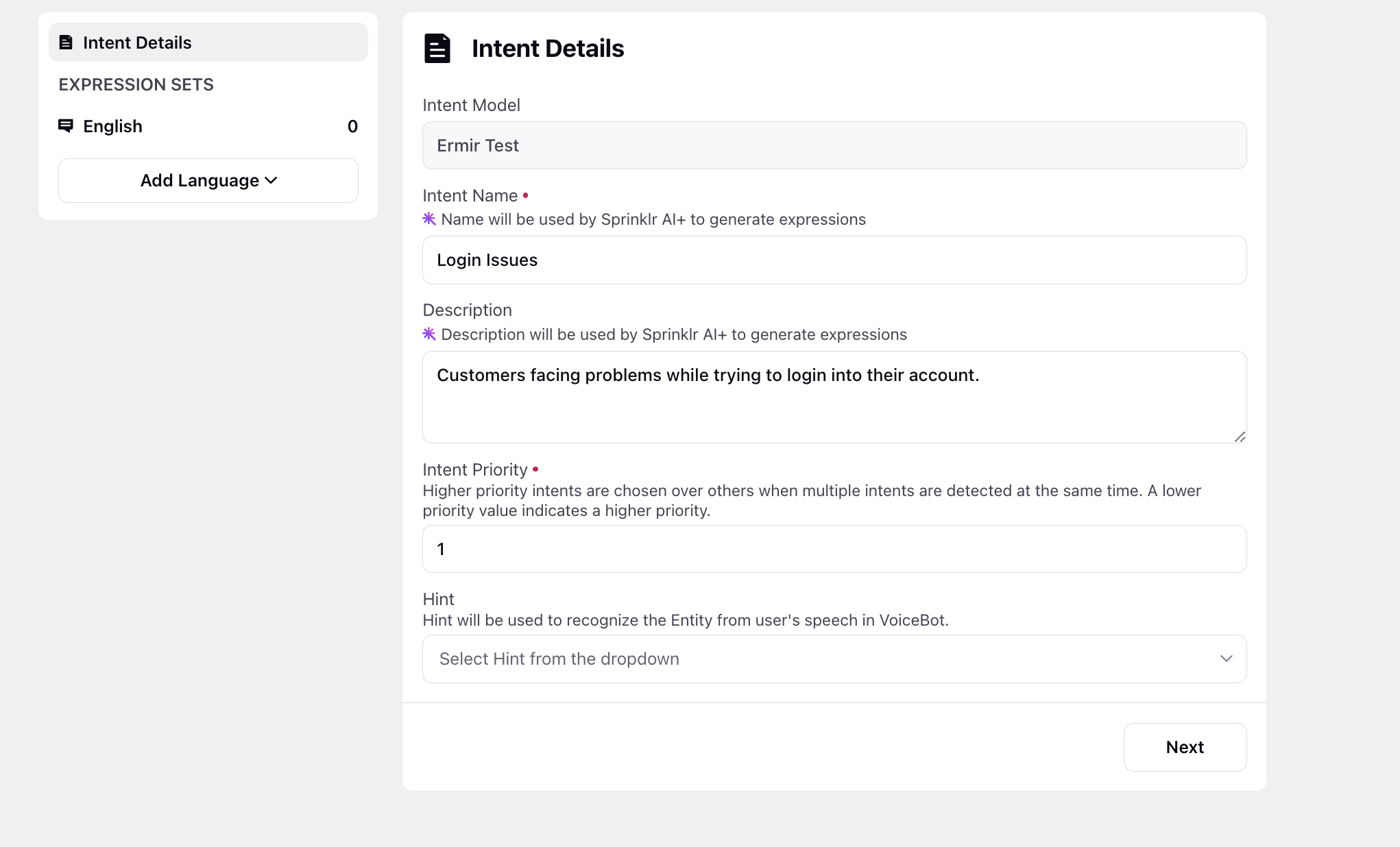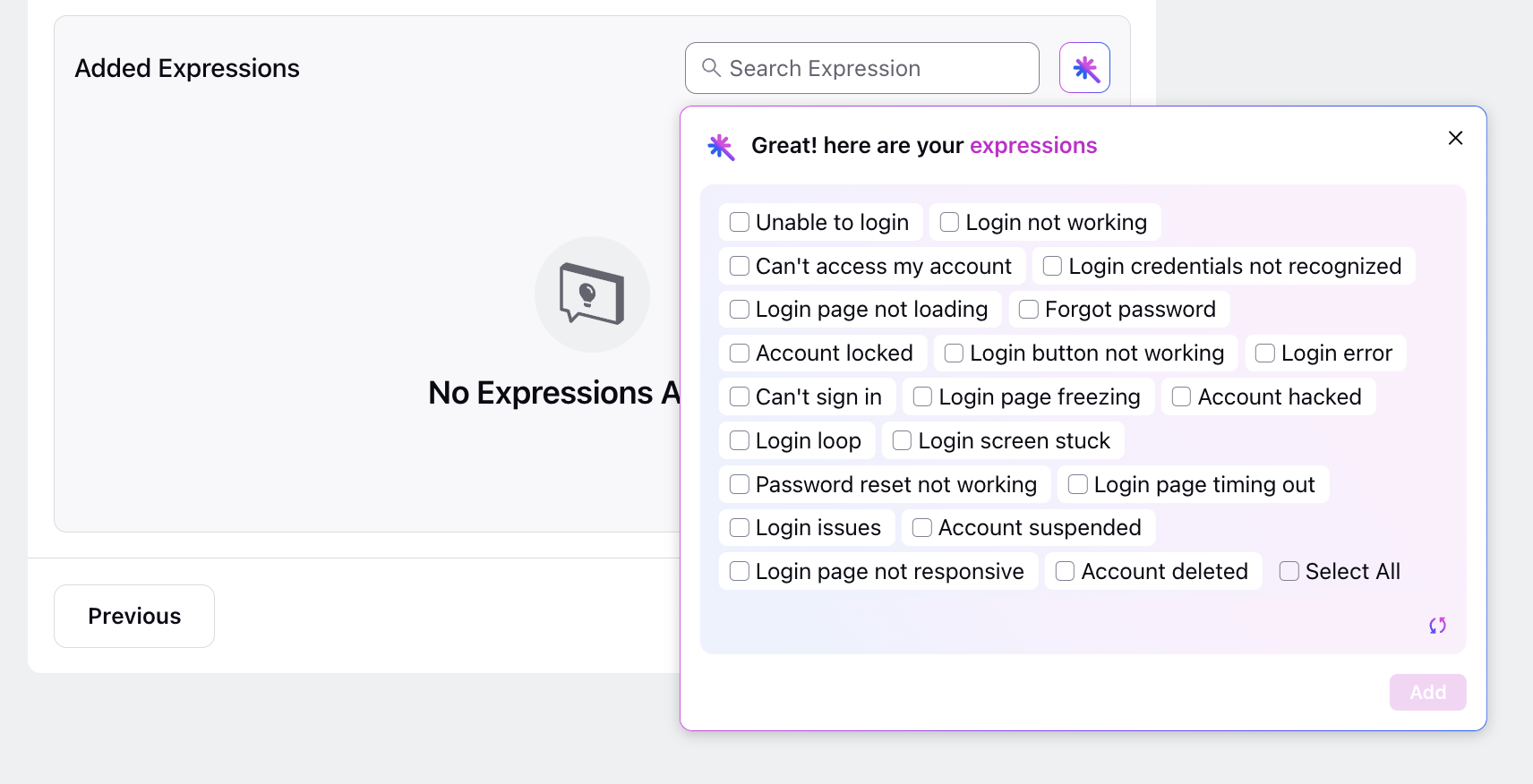Utterance Suggestions Using Generative AI
Updated
Intent Models can leverage Sprinklr AI+ to generate expressions and train models quickly and accurately. This feature eliminates the need for adding the expressions manually and hence saves time and effort.
Enable Auto ML Tuning to Train an Intent Model
Create an Intent Model.
Next, enable Auto ML Tuning and click Create in the bottom right corner.

Next, add intents to your model with descriptive intent names and a crisp description.

Click the Generate Expressions icon on the top right of the Added Expressions box. Sprinklr AI+ will generate the expressions.
Review the expressions and click Select All at the bottom of the expressions pop-up box to select all the generated expressions. Click Add to add them to your intent.
You can click the Retry icon at the bottom right of the expressions pop-up box to send the intent name and description back to Sprinklr AI+ for processing and generate new expressions

Review all the added expressions. Click Save.
You need to train the model once all the intents are created.
Note: Providing a descriptive name and description assists Sprinklr AI+ in understanding the exact customer intention and generating appropriate expressions. |
Best Practices for Intent Names
The intent name should be a concise phrase consisting of 4-5 words that clearly indicates the user's intention. Having a descriptive intent names enables the Sprinklr AI+ to understand it better.
Intent names with a verb followed by a noun are best suited. For example, "Apply for a car loan" or "How to apply for a loan" are good examples of descriptive intent names because they accurately convey the user's intention. On the other hand, "Car Loan" or "Car Loan Application" are bad examples of intent names because they are too vague and don't provide enough context about the user's intention.
Avoid the following type of intent names.
Intent Name Placeholders: Intent 1, FAQ_3, Bot_2, etc.
Names with Business-specific Abbreviations: UPC (Universal Product Code), OTA (Online Travel Agency), etc.
Add full forms for the same. Commonly used abbreviations like OTP, EMI, etc. are acceptable.
Nouns: Avoid using just a noun or a product/brand name, instead use descriptive phrases to make the intent name more informative and useful.